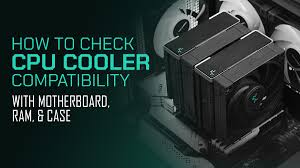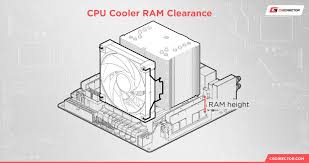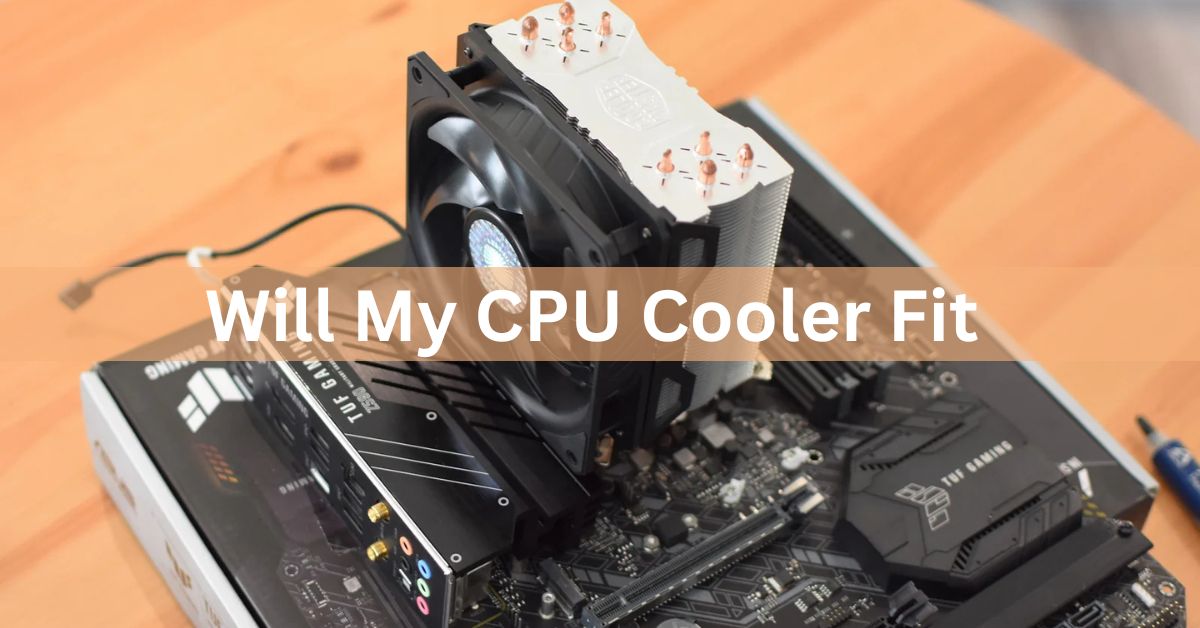When building a PC or upgrading your cooling solution, one of the most pressing questions is whether your CPU cooler will fit within your case and be compatible with your CPU. A successful installation not only ensures proper cooling performance but also prevents potential damage to components. Therefore, understanding the key factors that influence cooler compatibility is essential for any PC builder or upgrader.
“To check if your CPU cooler will fit, verify the cooler’s height against your case’s specifications and ensure it is compatible with your CPU socket. Also, consider RAM clearance and potential interference with other components【7†source】【9†source】.”
In this article, We will discuss “ Will My Cup Cooler Fit “
Table of Contents
Understanding CPU Cooler Compatibility:

Socket Compatibility:
The first step in determining if your CPU cooler will fit is checking its compatibility with your CPU socket. Intel and AMD processors use different socket types, including LGA 1200, AM4, and LGA 1700, among others. Each cooler is designed to fit specific sockets, so it’s essential to verify that the cooler you choose is compatible with your CPU. Check the cooler’s specifications, usually listed on the product packaging or manufacturer’s website【7†source】【9†source】.
Case Dimensions and Clearance:
After ensuring socket compatibility, the next crucial step is to verify that the cooler fits within your computer case. Every case has a maximum height specification for CPU coolers, which can usually be found in the case’s documentation or on the manufacturer’s website. Measure the available space from the CPU socket to the nearest obstruction (like the side panel of the case) and compare it to the cooler’s height【8†source】.
For instance, if your case allows for a maximum cooler height of 160mm and your chosen cooler is 155mm tall, it should fit. However, it’s wise to leave a small margin (about 1-2 cm) for safe installation【9†source】.
Also Read: LGA 1200 CPU List – Complete Guide 10th & 11th Gen Processor List!
RAM Clearance:
Another vital factor is RAM clearance. Some CPU coolers, especially larger tower coolers, can extend above the CPU socket and potentially interfere with RAM modules. If you have tall RAM heatsinks, ensure the cooler does not obstruct them. Some coolers are specifically designed to provide RAM clearance, which can be beneficial in tight builds【7†source】【9†source】.
To measure for RAM clearance:
- Check the height of your RAM modules.
- Compare that with the cooler’s dimensions and ensure there’s adequate space to prevent interference【8†source】.
Case Layout:
The internal layout of your case can significantly affect cooler compatibility. For instance, if your case has side-mounted fans or other components close to the CPU area, they may restrict airflow or prevent the cooler from fitting correctly. Assess your case’s layout before deciding on a cooler【9†source】. Additionally, consider the orientation of the cooler, as this can impact cooling efficiency and overall airflow within the case.
Types of Coolers:
Different types of coolers may have various fit requirements:
Air Coolers:
These vary in size, from low-profile models for compact cases to large tower coolers. When choosing an air cooler, ensure its dimensions align with your case’s specifications. It’s also important to check the cooler’s weight, as heavier models may require additional support or specific mounting methods to prevent stress on the motherboard. Additionally, consider the design and fan configuration, as these can impact cooling performance and noise levels.
Liquid Coolers:
For AIO (All-In-One) liquid coolers, consider both the CPU block height and the radiator size. Ensure the radiator can fit in your case’s designated mounting spots (typically top, front, or rear) and that the tubing has enough length to reach the CPU socket without stretching【8†source】.
Additionally, pay attention to the fan configuration of the radiator, as it can significantly influence cooling performance and airflow within the case, helping to maintain optimal temperatures during high workloads.
Measuring for CPU Cooler Fit:

To accurately measure and ensure your CPU cooler fits, follow these steps:
Measure Case Height:
Use a ruler or measuring tape to find the distance from the CPU socket to the side panel of the case. This measurement is crucial for ensuring that your cooler will fit without obstruction. Keep in mind that most manufacturers provide the maximum height specification for their coolers, so compare this with your measurement to determine compatibility. Additionally, be sure to account for any additional components or configurations, such as RAM height or nearby case fans, that may influence the effective space available for your cooler.
Check Cooler Specifications:
Look up the cooler’s height in its product specifications. This information is typically available on the manufacturer’s website or the retailer’s product page. Make sure to note the height along with any additional dimensions, such as width and depth, as these can affect installation in your case. Also, verify compatibility with your CPU socket type and ensure any mounting hardware is included to facilitate a smooth installation.
Also Read: How To Use Virtual CPU Real CPU – A Comprehensive Guide For Businesses!
Compare Measurements:
Subtract a small buffer (1-2 cm) for safe installation. This extra space ensures that the cooler can be installed without interference and allows for any slight variations in measurements or case flex.
Additionally, this buffer can help accommodate any potential thermal expansion during operation, ensuring that the cooler remains securely in place and functions effectively. Always double-check your calculations against both the cooler and case specifications to ensure a proper fit
Inspect for Interference:
Check the height of your RAM and any nearby components that could obstruct the cooler. Tall RAM modules or adjacent expansion cards can interfere with the installation or performance of larger air coolers.
If you find potential interference, consider opting for low-profile RAM or repositioning components to ensure proper clearance and airflow. Additionally, make sure that the cooler’s fan blades won’t collide with nearby parts during operation, which can lead to noise or damage
FAQ’s
About CPU Cooler Fit
1. What factors determine if a CPU cooler will fit in my case?
The main factors include socket compatibility with your CPU, the cooler’s height relative to your case’s dimensions, and potential interference with RAM or other components【7†source】【8†source】.
2. How do I measure the space available for a CPU cooler?
Measure the distance from the CPU socket to the side panel of your case and compare this with the cooler’s height specifications to ensure a proper fit【9†source】.
3. Can I use a CPU cooler that is slightly taller than my case allows?
No, it’s essential to choose a cooler that fits within the specified height limits to avoid installation issues and potential damage to your components【8†source】【9†source】.
4. What are low-profile coolers, and when should I use them?
Low-profile coolers are designed for compact builds with limited vertical space. They are ideal for small form factor cases or setups where RAM clearance is a concern【7†source】.
5. Is there a way to determine if my cooler is compatible with my motherboard?
Yes, check the cooler’s specifications for supported socket types and ensure they match your motherboard’s socket【8†source】【9†source】.
Conclusion
In conclusion, ensuring that your CPU cooler fits properly is crucial for optimal thermal performance and system stability. By carefully assessing socket compatibility, measuring available space in your case, and considering potential interference with other components, you can confidently select a cooler that meets your needs. For best results, always refer to manufacturer specifications and documentation before making a purchase.

